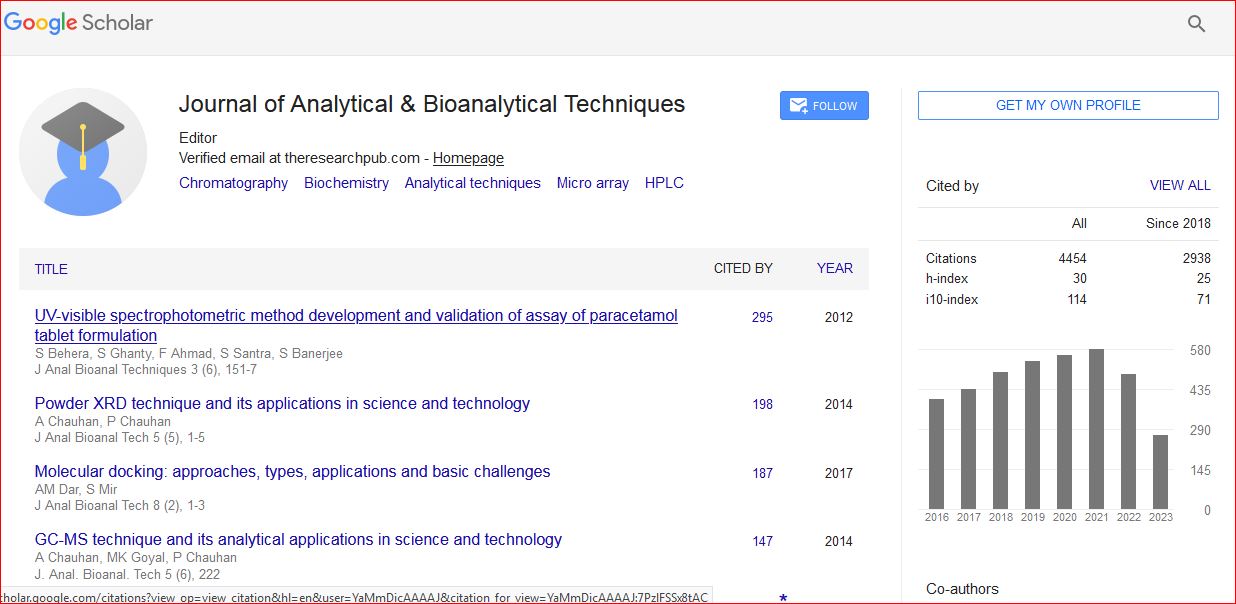Research Article
Study of the Ratio between Morphine-3-Îò-D-Glucuronide and Morphine-6-Îò-DGlucuronide in Blood Samples from Heroin Fatalities
Rino Froldi1, Katia Guerrini2, Antonella Argo3, Marta Cippitelli1, Lucia Dell'Acqua2, F iorenza Farè2, Paolo Procaccianti3, Gabriella Roda2*, Chiara Rusconi2, Giacomo Luca Visconti2, Luigi Ferrante4 and Veniero Gambaro2
1Institute of Legal Medicine and Insurance, Via Don Minzoni 9, 62100 Macerata, Italy
2Department of Pharmaceutical Sciences, University of Milan, Via Mangiagalli 25, 20133 Milan, Italy
3Institute of Legal Medicine and Insurance, University Hospital, Via del Vespro 129, 90127 Palermo, Italy
4Department of Biomedical Science and Public Health, Faculty of Medicine, Polytechnic University of Marche, Ancona, Italy
- *Corresponding Author:
- Gabriella Roda
Department of Pharmaceutical Sciences
University of Milan, Via Mangiagalli
25, 20133 Milan, Italy
Tel: 0250319328
E-mail: gabriella.roda@unimi.it
Received Date: February 12, 2015, Accepted Date: April 07, 2015, Published Date: April 14, 2015
Citation: Froldi R, Guerrini K, Argo K, Cippitelli M, Fare F, et al. (2015) Study of the Ratio between Morphine-3-β-D-Glucuronide and Morphine-6-β-D-Glucuronide in Blood Samples from Heroin Fatalities. J Anal Bioanal Tech 6:240. doi: 10.4172/2155-9872.1000240
Copyright: © 2015 Froldi R, et al. This is an open-access article distributed under the terms of the Creative Commons Attribution License, which permits unrestricted use, distribution, and reproduction in any medium, provided the original author and source are credited.
Abstract
In heroin fatalities the diagnosis of the cause of death, based only on chemical and toxicological data, may be particularly difficult; a complete knowledge of the case history is fundamental. Thus, for each case analytical results should be interpreted taking into account also autopsy findings, information from the scene and relevant medical history. In fact wide variability is present in post-mortem blood concentration of morphine (MOR), the main metabolite of heroin, which is usually the most important analytical result for the interpretation of the cause of death. Recently, increasing interest has grown towards the role of the metabolites morphine-3-β-D-glucuronide (M3G) and morphine-6-β-D-glucuronide (M6G) in mediating heroin effects. To this purpose SPE technique was employed to extract MOR, M3G and M6G from autopsy blood samples. Subsequently a LC/MS-MS method for the determination of these analytes was developed, using a gradient elution with a binary mobile phase, the analytes being revealed by means of an ESI-QqQ Mass Spectrometer operating in positive ionization and MRM mode. After validation, the method was applied to twenty-one blood specimens collected from cases of suspected acute narcotism which previously underwent a Systematic Toxicological Analysis (STA) to highlight the presence of ethanol and of the main drugs of abuse and/or their metabolites. The concentration ratios of MOR, M3G and M6G were investigated. The influence of some risk factors, such as the contemporary use of alcohol, methadone or cocaine, was also studied. Some important indications emerged: the ratio M3G/M6G, being quite constant, should be a valid reference value to assess toxicity. Furthermore the value of M3G/M6G ratio detected in heroin addict, in this study, is lower than that found in people who assume morphine for therapeutic purposes. This ratio could be of help to overcome the difficult interpretation of chemical and toxicological data.

 Spanish
Spanish  Chinese
Chinese  Russian
Russian  German
German  French
French  Japanese
Japanese  Portuguese
Portuguese  Hindi
Hindi 
